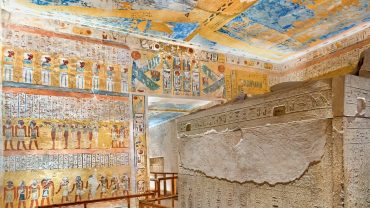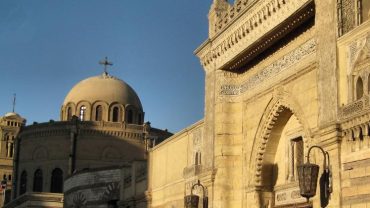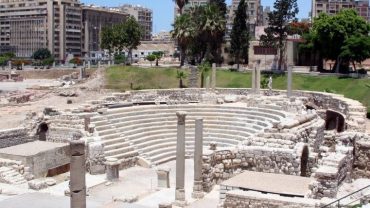Karnak Temple Luxor Egypt | Best Things to Do in Luxor | Karnak Temple Plan, Facts, Information, Guide | Best Pharaonic temple | Egypt History | Ancient Egypt Civilization
Where is Karnak Temple?
Karnak temple is in Luxor Governorate in Upper Egypt on Luxor East Bank of the Nile River to the north of Luxor Temple.
The Karnak complex opening hours
Karnak complex is open daily from 06.00 am to 17.00 pm but the ticket kiosk close at 16.30 pm.
How to get to the Karnak temples?
It is easy to get to Karnak temple whether from Hurghada, Aswan, Marsa Alam, and Nile Cruise.
From Hurghada
The distance between Hurghada and Luxor is about 250km, so, it takes more than three hours to drive from Hurghada to Luxor.
From Aswan
Aswan is 300KM to the south of Karnak temple and it takes around four hours to get from Aswan to Karnak.
From Nile Cruise
Whether you do your Nile Cruise Luxor Aswan or from Aswan to Luxor, Karnak temple is 15 minutes maximum from any Nile cruise boat.
From Marsa Alam
The distance from Marsa Alam to Karnak temple is 375 and takes around 6 hours of driving.
If you plan to visit the Karnak temples during your day tours from Hurghada, Marsa Alam, or Nile Cruises, you will end at the parking lot. Then you go through the entrance of the visitor center.
Visitor Center
After you will cross the X-ray, you will see in front of you an amazing maquette for the Karnak temples. The Maquette offers a very nice overview of the Karnak complex and how the pylons look inside the complex. Restrooms are available in the visitor’s center (5 L.E) per person.
Amun temple Tickets
kindly put in your mind that you will need to purchase a ticket for Karnak temple but if you like to visit Mut Temple, you will need to purchase a different ticket.
Adult: EGP 220 (9.1 $)
Students with valid cards: EGP 110(4.5 $)
Children aged 6-12 years: EGP 110 (4.5 $)
Children under 6 years: FREE
Best time to visit the Karnak temple
Karnak temple is one of the most visited places in Egypt. People from Cairo, Hurghada, and Marsa Alam, on daily trips plus Nile Cruises, head to the Karnak temple daily.
Normally the temple of Karnak is very busy from 06.00 am to 09.00 am because of the Cruise people. Hurghada and Marsa Alam day trips reached the place around 10.00 am to 12.00 pm. so, the best time to visit the Valley of the Kings could be from 14.00 pm to 17.00 pm.
How much does it cost a ticket for a Camera in the Karnak temple?
Nowadays it is allowed to use your camera or Mobil phone for free inside the Karnak temples.
What was Karnak built for?
Karnak temple on Luxor east bank has a totally different function from the Pharaonic temples on Luxor west bank. The temple of Amun or Al Karnak was the largest religious building ever built and it was a cult temple. In other words, Karnak was dedicated to the worship of the triad of the Luxor God Amun, Goddess Mut, and God Khonsu.
Therefore, Karnak was dedicated to some more Gods besides Amun such as Ptah,
Where does the name Karnak come from?
Karnak is the modern name for the temple of Amun in Luxor on the eastern bank of the Nile River but in ancient times the temple had many names.
- Ipet-Iset means throne of the two lands
- Ipt-Swt means the most selected of places
- Kar Nej was symbolizing the god Amun and it was corrupted into Karnak.
- Khornok means fortified village and most probably it was an Arabic name related to the many temples in the area.
- Per Imn means the house of Amun
Interesting Facts About Karnak Temple
- Karnak temple is a cult temple on the east bank of the Nile River in Luxor
- The largest ancient religious site not only in Egypt but in the world
- The temple of Amun covers sixty-one acres
- Karnak temples consist of a group of temples such as Mut temple, Ptah temple, Khonsu temple, and Osiris temple.
- There are two calendars in the Karnak temple
- The precinct of Amun is a UNESCO WORLD HERITAGE since 1979
- The oldest part of Karnak temple found until now dates back to Sesostris I (Senusret I)
- The highest standing Obelisk in Egypt exists in Karnak temple for the Queen Hatshepsut
- The Hypostyle Hall in Karnak is the biggest in the world and it was copied in Notre Dam
- Karnak Sacred Lake is the biggest in Egypt
- Most of the Egyptian temples have one axis, the sun axis or the Nile River axis but Karnak has two axes the sun axis and the Nile axis
- The Opet Festival, one of the most important Ancient Egyptian Religious feasts started in Karnak temple
- Most of the Pharaohs of the New Kingdom till the Ptolemic Period added countless shrines, temples, and statutes in the Karnak temples
- Karnak Canon is one of the very important sources of the Ancient Egyptian History
Karnak temple layout | The temple of Karnak Architecture
- Port
- Two small Obelisk of Seti II
- Avenue of Sphinxes
- First Pylon
- Barque Shrine of Seti II
- Mudbrick ramp
- The Taharqa kiosk
- Temple of Ramesses III
- Statue of Ramesses II which was usurped by Ramesses VI (1143-1136 BC) and later by Pinedjem a High Priest
- Open Air Museum
- The Second Pylon
- The Great Hypostyle Hall
- Second Pylon
- The Obelisk of Thutmose I (the last of four obelisks that originally stood in front of the Fourth Pylon)
- Fourth Pylon
- Fifth Pylon
- The Colonnade of Tuthmosis I and the Vestibule and Antechamber of Tuthmosis III Between the Fifth and Sixth Pylons
- Hatshepsut Obelisk
- Sixth Pylon
- Holy of the Holies of Philip Arrhidaeus
- Sanctuary of Hatshepsut
- Festival Hall of Tuthmosis III
- Botanical Garden
- Ptah temple
- Osiris Shrine
- Sacred Lake
- The Courtyard of the Cachette
- Seventh Pylon
- The Courtyard Between the Seventh and Eighth Pylons
- White Limestone Colossus before the Eighth Pylon
- Eighth Pylon
- Ninth Pylon
- Tenth Pylon
- Mut temple
- Khonsu temple
- Gateway of Ptolemy III Euergetes
- Avenue of Sphinxes between Karnak temple and Luxor temple
Karnak Harbor or Port
Karnak temple like the majority of the Pharaonic temples was connected to the Nile River by a canal that ends with a harbor. That was the way how they bring stones and sacrifices inside the temple.
The western façade of the port still keeps Hieroglyphic texts recording the height of the Nile flood from the 22nd to the 26th dynasties.
Two Obelisk of Seti II
Pharoah Seti II erected two small obelisks 2.5 meters each on the eastern side of the harbor. The first one was in the northeast corner; the second obelisk is still standing in the southeast corner. The 4 sides of the Obelisk are inscribed with the Pharoah’s names inside the cartouches and dedication text to Amun.
Avenue of Sphinxes of Ramesses II | Avenue of the Rams
Karnak temples have three Avenue of Sphinxes
- 1st and longest about 3 km connects Karnak temple to Luxor temple and it was reopened on 25 November 2021 with hundreds of ram-headed statues, and sphinxes statues on both sides.
- 2nd standing in front of Karnak temple and it reached the second Pylon
- 3rd Avenue of Sphinxes connects Amun temple to Mut temple
After the Karnak port, we walk through the processional road decorated with Ram-Headed Sphinxes to reach the entrance. Each Sphinx has a small human statue under its head representing Pharoah Ramesses II in an Osiris form.
During the Egyptian Opet Festival, the statutes of Amun, Mut, and Khonsu were carried from Karnak to Luxor temple through the Avenue of Sphinxes.
The enclosure wall of Karnak temple
One of the main features of any temple is the enclosure wall around the temple to separate the temple from the area around it. Ancient Egyptian temples (Pharaonic temples) have one surrounding wall built of mud-brick but Greco-Roman temples have two surrounding enclosures. One traditional mud-brick and one stone enclosure.
Karnak temple enclosure mud-brick wall was built by Nectanebo I and it includes the temple from the port to Ptah temple north and Khonsu and Mut south. The enclosure has 4 entrances.
Karnak Temple First Pylon
Pylon means two towers and the entrance in between; Karnak’s first Pylon was built by Nectanebo I but it was never finished. The Pharoah died leaving no sons, no daughters behind him. The south tower is about 31m and the north one reaches 21m in height. It supposes to be 40m in height like the Edfu temple.
Each tower of these huge pylons has 4 vertical grooves serving to house the poles adorned with flags at their tops.
The Great Open Court
The great open court of Karnak measures 85*100m and it has many things such as The Kiosk of Taharqa, Part of the old ramp, the Barque Chapel of Seti II, Ramses III’s small temple, portico, and Colossi of Ramesses the great with Nefertari.
Mud-brick Ramp
The ramp is proof that the pylon was still under construction and the pylon was never finished. It is built out of brick caissons, wood, and stones and it was used to drag the blocks on it.
Barque Chapel of Seti II
There are 3 Barque Chapels for the 3 sacred boats of the God Amun, his wife Goddess Mut, and their son Khonsu. Amun shrine is the middle one and Mut to the left side while Khonsu to the right side. Once, the 3 Chapels were roofed but are destroyed now and they were inscribed and colored.
God Amun Chapel is still in good condition and the walls are decorated with scenes showing Seti II offering Maat to the triad of Luxor. In another scene, he offers offerings to Amun, behind him Mut and Khonsu as humans with a half-moon above his head.
The names and titles of the Pharaoh are written inside the cartouches and we still can see colors on parts of the walls.
Column of Taharqa Karnak Temple
The column of Taharqa is located in the great open court of Karnak temple in Luxor and it is the only column from Taharqa Kiosk. Once, Taharqa Kiosk was supported by 10 columns with open lotus capitals and it had four entrances. Meanwhile, it was roofed but nine columns and the roof are lost now. Taharqa was an Egyptian Pharoah from Nubia who ruled Egypt between 690 to 664 BC. The column is 23m in height and it is not one piece but layers of stone blocks.
Columns in Ancient Egyptian Architecture
Columns in the first beginning were one single piece of a monolithic block of limestone, sandstone, or granite. However, in the late period columns were built of different layers. We found around 30 different columns forms in the Pharaonic temples. Some end with Open lotus, closed lotus, open papyrus, closed papyrus, and Hathoric Capitals.
Columns held special significance for the Ancient Egyptians and they were divided into Base, Shaft, Capital, Abacus, and Architrave. The columns were introduced in order to simulate nature and to identify man again with the earth. They always bear inscriptions, carved relieves, and colors.
Alabaster Altar
In the middle of the Kiosk, there is an alabaster altar for the offerings
Alabaster Sphinx of Tutankhamun
Again, the great open court of Karnak temple on Luxor east bank contains an alabaster Sphinx of Tutankhamun. The statute represents the Pharoah with the body of a lion and a human head. The King put above his head the royal headdress called NEMES and a false straight beard and exposed ears.
In the middle of the head, there is a hole most probably containing sacred oils so, people can perfume themselves before going or praying to the God Amun.
North and South Portico | Portico of the Bubastides
Karnak portico is located to the north and south of the great open court behind the first Pylon. The columns of the portico are supposed to be roofed so; people can be in the shade during the celebrations.
The Temple of Ramesses III | Barque Temple of Ramesses III
Tips for visiting Karnak temple
- The first piece of advice we can tell, visit the temple of Karnak with an archaeologist guide. Karnak complex is very Huge and it is impossible to find everything in one book or to know the places. So, the Egyptologist guide will provide you with a detailed explanation of Egypt’s History, the Ancient Egyptian Religion, and the gods in ancient times.
- Read before you go and make up your mind if you are an individual visitor which parts of the Karnak you like to visit. Make up your mind if you like to add Mut temple to your itinerary.
- Take extra water with you and some snacks, especially in the summer months, and drink at least 5 small bottles of mineral water to not hydrate.
- Small change for the WC
- Do not forget to take your hat, sunglasses, and suncream with you
- Cotton dress during summer
- There is a café facing the Sacred Lake at the Karnak temple if you like to drink something or have an ice-cream




Comment (0)